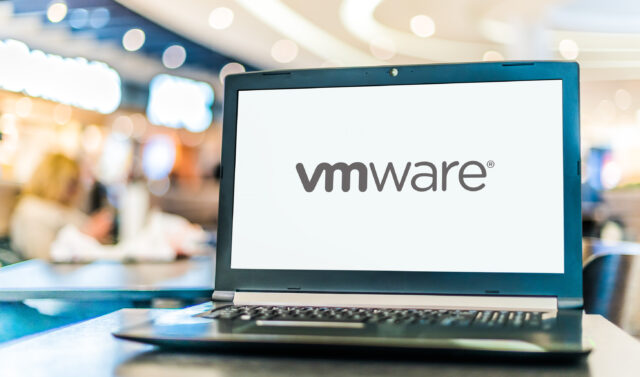The hypervisor world is shifting -- is this the end of the VMware era?

Broadcom’s acquisition of VMware late last year created fear and uncertainty among vendors and partners alike. The subsequent overhaul of VMware’s product offering and consumption model have only served to fuel this disquiet.
In parallel with the restructuring and consolidation of VMware’s most popular and prominent product offerings, Broadcom’s takeover has seen VMware transition from a perpetual licensing structure to compulsory subscriptions. As a result, many VMware customers face significant cost increases.
These commercial changes are proving particularly challenging for SMBs, who now face the prospect of paying a lot more for bundled subscriptions that include products they don’t need and won’t use. Meanwhile, enterprise edge customers are also reconsidering their options in the face of licensing bundles that now come with a hefty price tag.
With more than half of VMware customers reported to be looking to leave the Broadcom owned platform, there are some key considerations that will be top of mind for IT leaders as they explore their options.
Getting to grips with the wider issues
The decision to pivot is one that IT decision makers won’t make lightly. VMware’s pricing adjustments come at a point when the proliferation of IoT devices and the need for real-time data processing is becoming increasingly important; a shift that impacts how organizations design their infrastructure and deploy applications. But that’s not the only issue.
There’s no denying that edge sites present some unique infrastructure challenges. Intermittent connectivity, latency, bandwidth limitations, and hardware constraints all need to be addressed to assure reliable, real-time application performance.
In addition, IT leaders also need to wrangle a number of important edge data management issues. These include making decisions on what data should remain on site, be archived in the cloud, backed up to a data center, or deleted entirely. For the retail, healthcare, manufacturing, and utility sectors, where access to real-time data is mission critical, the outcomes associated with these choices will be significant.
If VMware is no longer a viable option for SMB and enterprise edge users, including those that are investing in innovative smart devices that require a high-performance remote infrastructure, then what’s the alternative?
The answer is to consider hyperconverged infrastructure (HCI) solutions that are purpose-built for the edge, are easy to scale and manage, and deliver the high availability and flexibility needed to meet evolving business needs.
HCI: a fast-evolving landscape
While Broadcom’s changes to VMware have created difficulties for SMB and enterprise edge customers, it has also opened up opportunities for other vendors to offer alternative HCI solutions that will meet their needs.
Combining computing, networking, and storage resources into a single and streamlined architecture, HCI enables organizations to run crucial applications at individual sites and still retain a connection to the cloud if needed.
Unlike traditional data center architectures, which require dedicated hardware devices for storage and networking, HCI provides simplified hardware and software components that integrate traditional data center hardware into a virtualized appliance controlled by a software layer. Typically, this consists of industry standard x86 servers, a hypervisor, and software-defined storage, with operating functions distributed across the cluster by software that runs on each server node.
It's this hardware consolidation that gives SMBs and enterprise edge users the high availability performance they need, where they need it. It also enables them to scale resources in line with dynamically changing demands and address their organization’s specific infrastructure priorities.
In addition to centralizing and simplifying management of their environments, HCI minimizes the physical space needed to implement computing, networking, and storage. It also consumes less power, is easier to keep cool, and is less likely to require maintenance or spare parts than legacy technologies.
A compelling option for SMBs and the edge
Businesses seeking alternatives to VMware that offer everything they need -- performance, flexibility, and more cost-effective pricing models -- will be actively seeking flexible HCI solutions that eliminate the risk of signing up to overpriced or overprovisioned setups.
For SMBs, the inherent simplicity offered by HCI means it can be installed by personnel with general IT skills expertise in under an hour. This means they can get new sites up and running fast and quickly start to benefit from the associated reduced downtime and business agility this capability bestows.
After this, centralized management tools eliminate any need to undertake onsite engineering visits while HCI software tools ensure that compute and storage resources are allocated and balanced to deliver performance in line with required parameters. Finally, alongside reducing the risk of overprovisioning, additional infrastructure resources can be spun up with zero delay.
For enterprise businesses that operate numerous edge locations, HCI enables IT teams to efficiently manage and secure data and applications across thousands of sites in a streamlined and cost-effective way. By enhancing reliability and simplifying management, HCI enables these organizations to focus on their core strategic priorities: driving innovation, enhancing customer experiences, and scaling operations efficiently.
To assure a smooth transition and find an HCI solution that best fits their needs, organizations should start by evaluating the VMware software features they use and how these are utilized across the business. This will enable them to benchmark if the capabilities offered by alternative solutions will match their organization's unique needs.
Image Credit: Monticelllo / Dreamstime.com
Bruce Kornfeld is Chief Product Office at StorMagic
